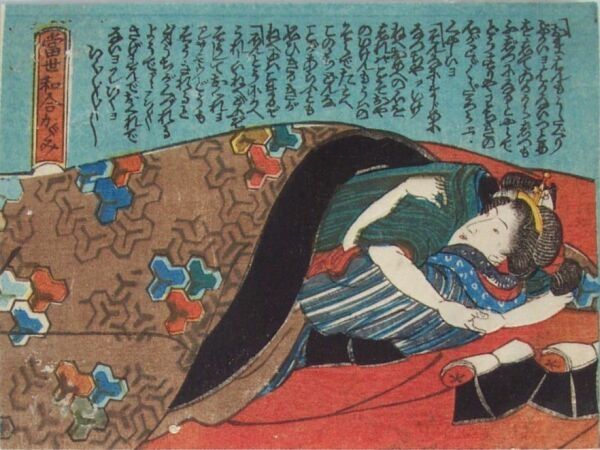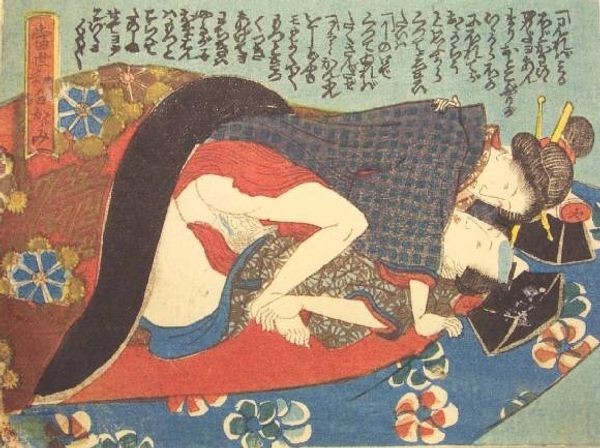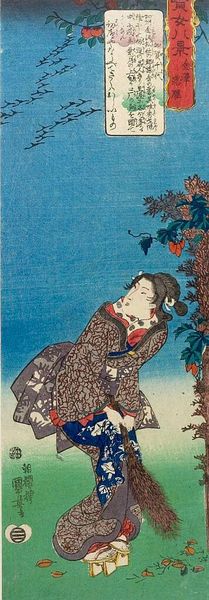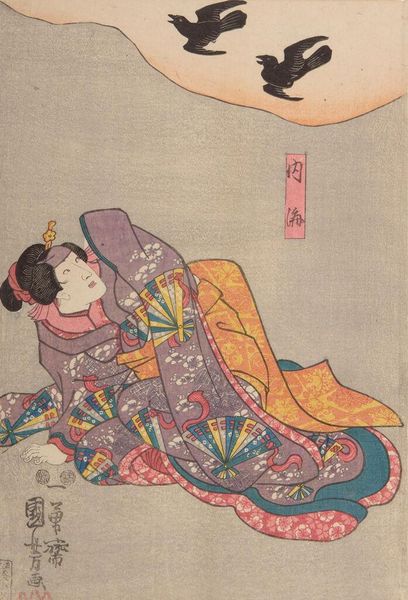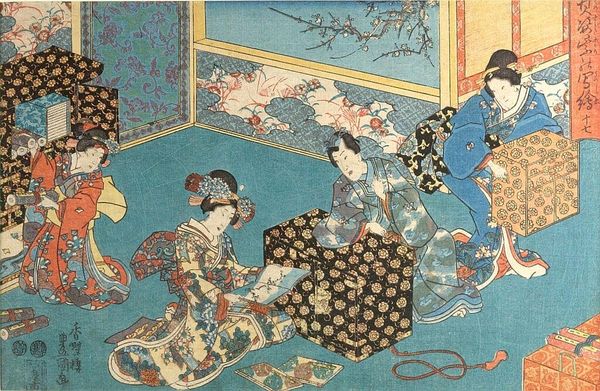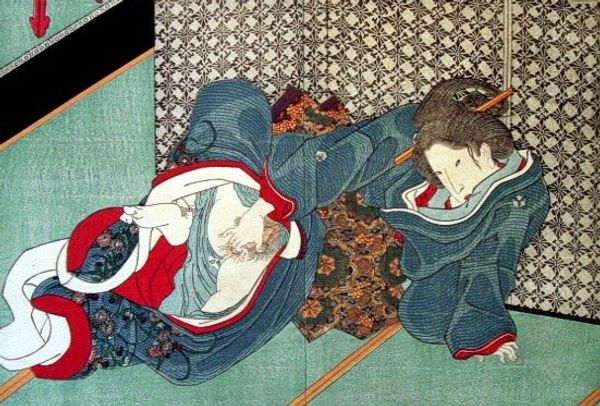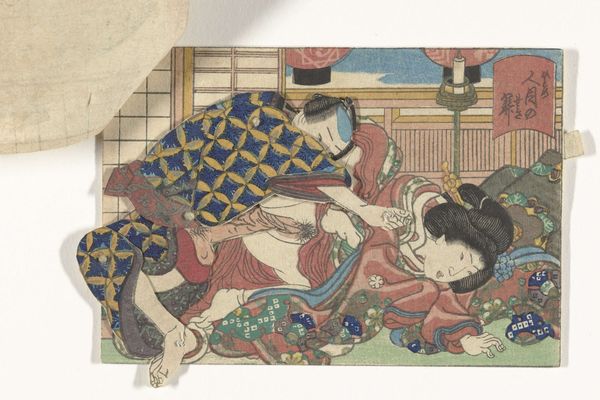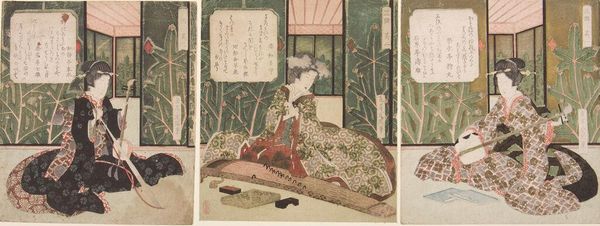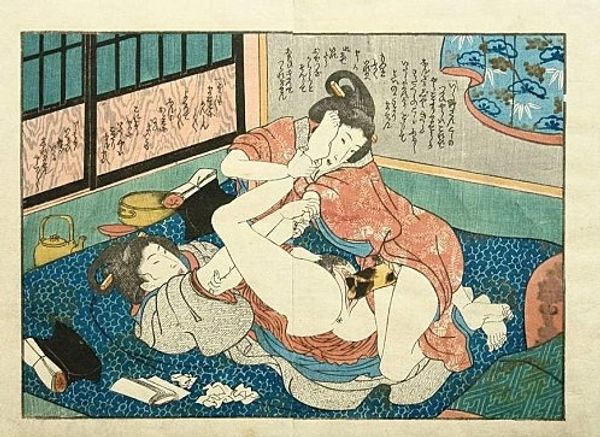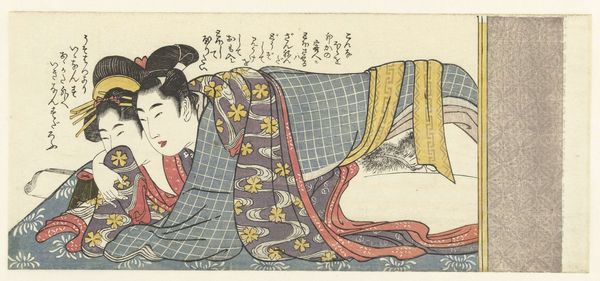
print, woodblock-print
# print
#
asian-art
#
ukiyo-e
#
woodblock-print
#
naive art
#
genre-painting
#
erotic-art
Copyright: Public domain
Editor: This woodblock print, "The Blue Futon," by Utagawa Kunisada, dates back to 1835. It's immediately striking how intimate the scene feels, despite the seemingly detached figures. What aspects of this piece speak to you most strongly? Curator: Well, beyond the personal intimacy, I see a fascinating snapshot of socio-political dynamics playing out through Ukiyo-e. Consider how prints like these, mass-produced and relatively inexpensive, circulated amongst different social strata. Genre scenes, especially those hinting at eroticism, fulfilled a certain consumer demand and simultaneously reflected and shaped societal norms. This work highlights the shifting attitudes toward public displays of affection. It also gives agency to the people involved, defying conventional rules, providing pleasure to both those inside the image, as well as a subtle message to viewers. Editor: So you're suggesting this seemingly private moment also had a very public role, shaping the image of intimacy itself? Curator: Precisely. The "naive art" tag assigned through AI suggests a certain unrefined quality, but I'd argue that’s a feature, not a bug. It invites viewers into a world that feels both accessible and aspirational. In Ukiyo-e, this type of work humanized intimacy for ordinary individuals while subverting established rules on visuality. What are your thoughts? Editor: I hadn't considered the agency conveyed by depicting such private moments. It challenges the conventional, often rigid, portrayals of that period. Now I wonder about the target audience of these prints. Were they primarily consumed by the merchant class, seeking glimpses into a more lavish lifestyle? Curator: Good question. While merchants certainly played a role, samurai and even the aristocracy partook in this vibrant visual culture, often anonymously. Prints offered a means of engaging with ideas and lifestyles outside the bounds of their prescribed roles. Thinking about who creates, disseminates and then consumes images brings up complex issues of politics. Editor: This perspective really illuminates the dual role of art as both a personal expression and a reflection of social currents. Thanks. Curator: Absolutely. Understanding the social life of images offers a deeper appreciation of their complexity, and our own history.
Comments
No comments
Be the first to comment and join the conversation on the ultimate creative platform.


